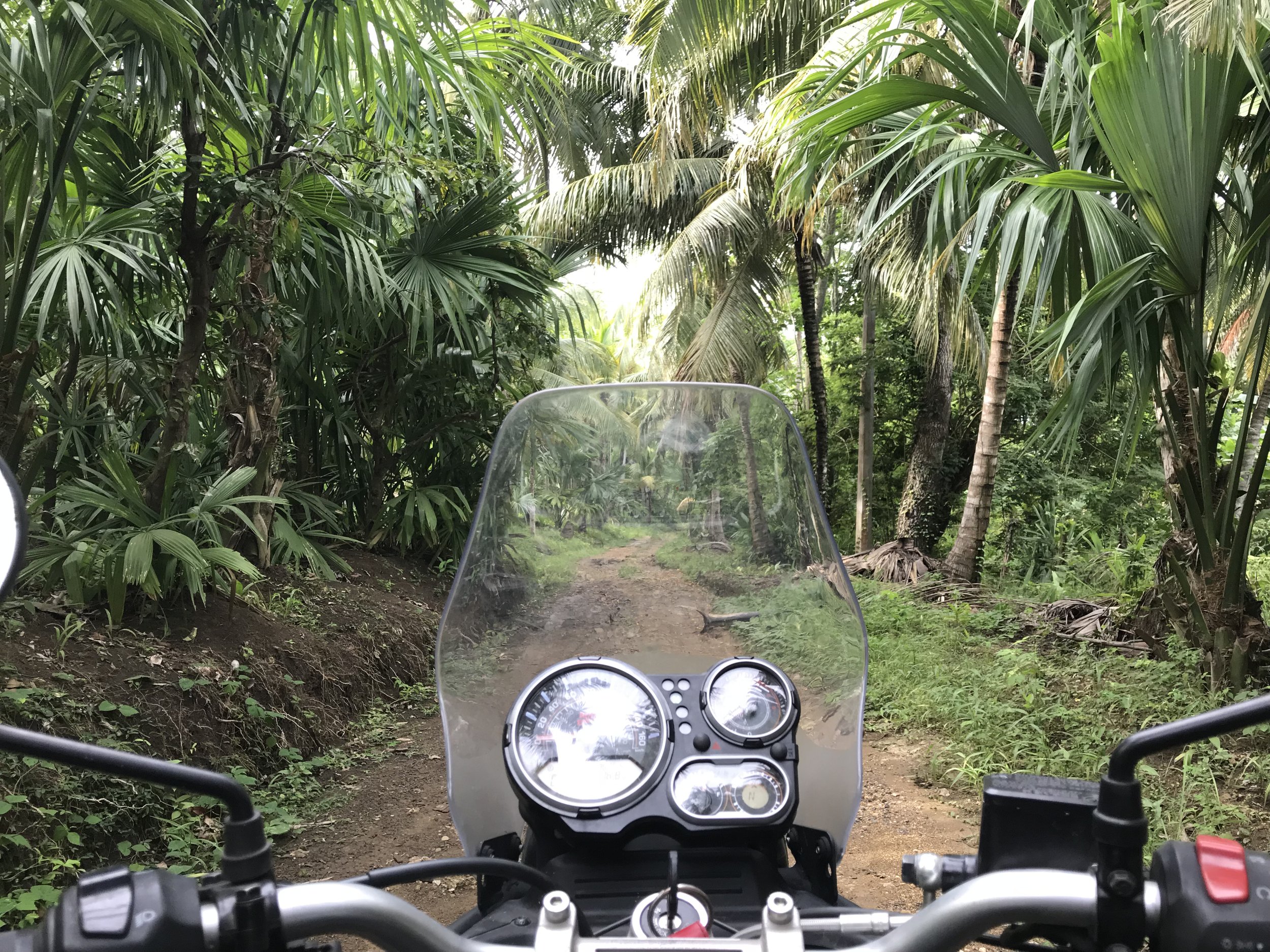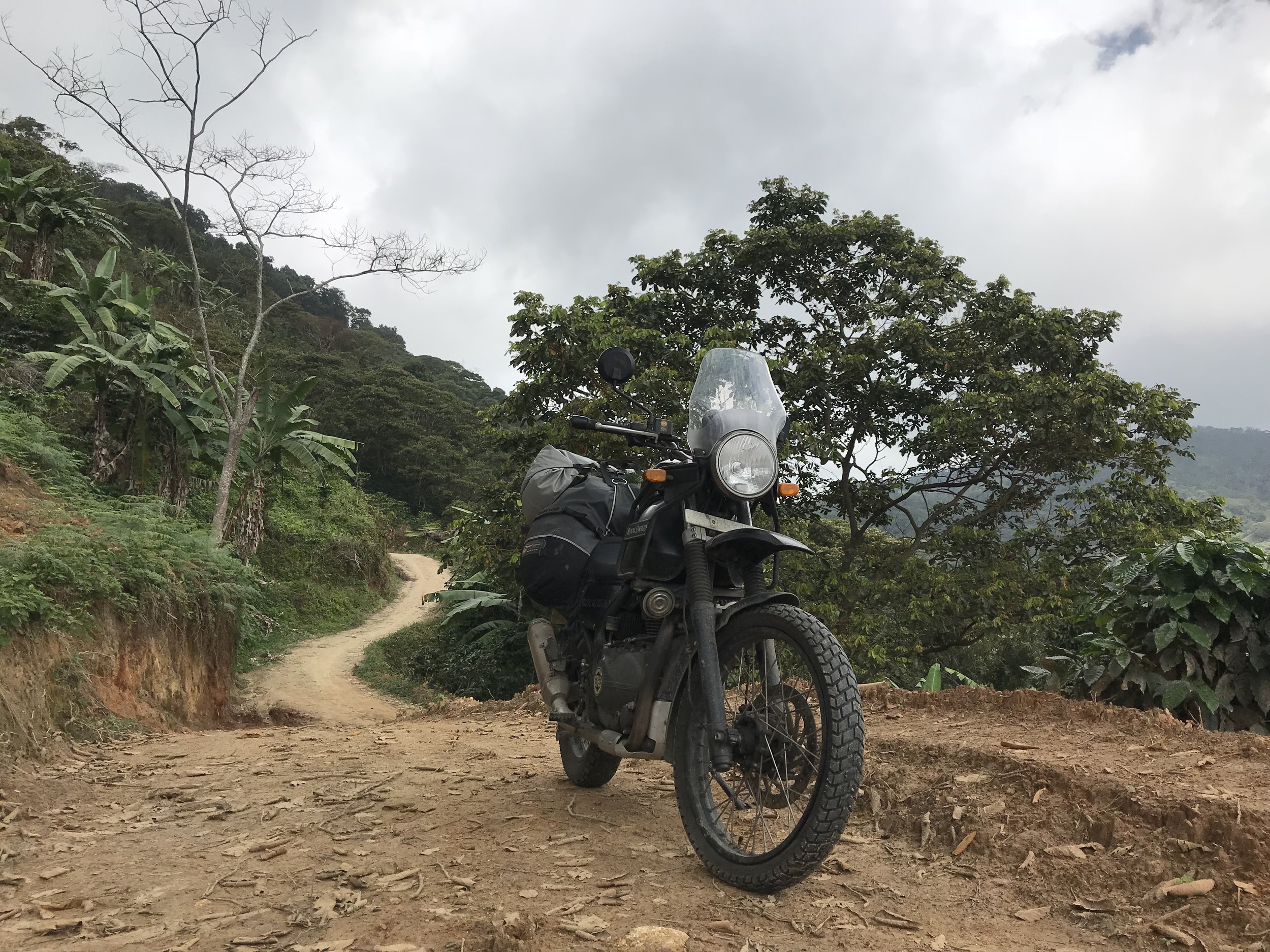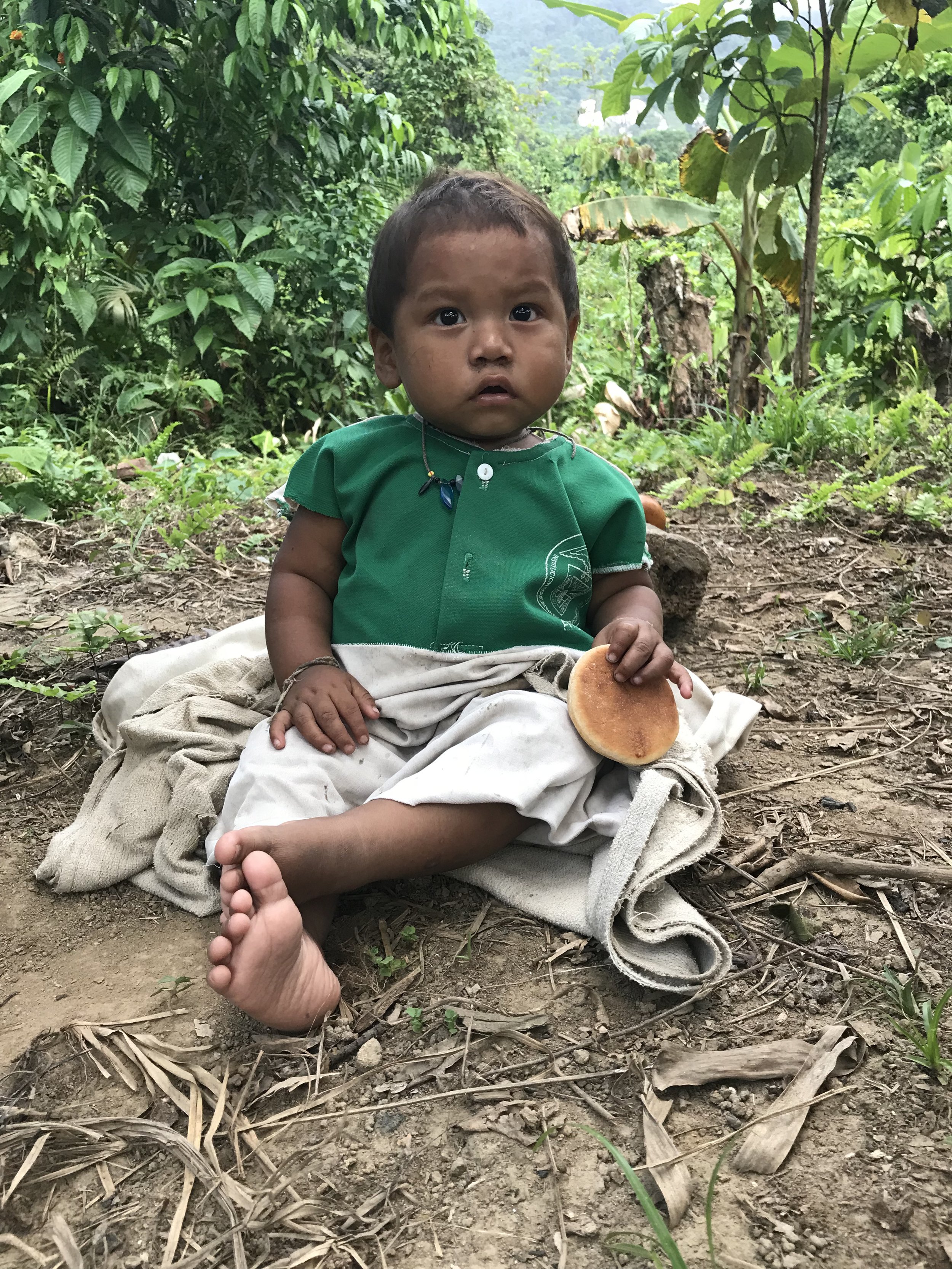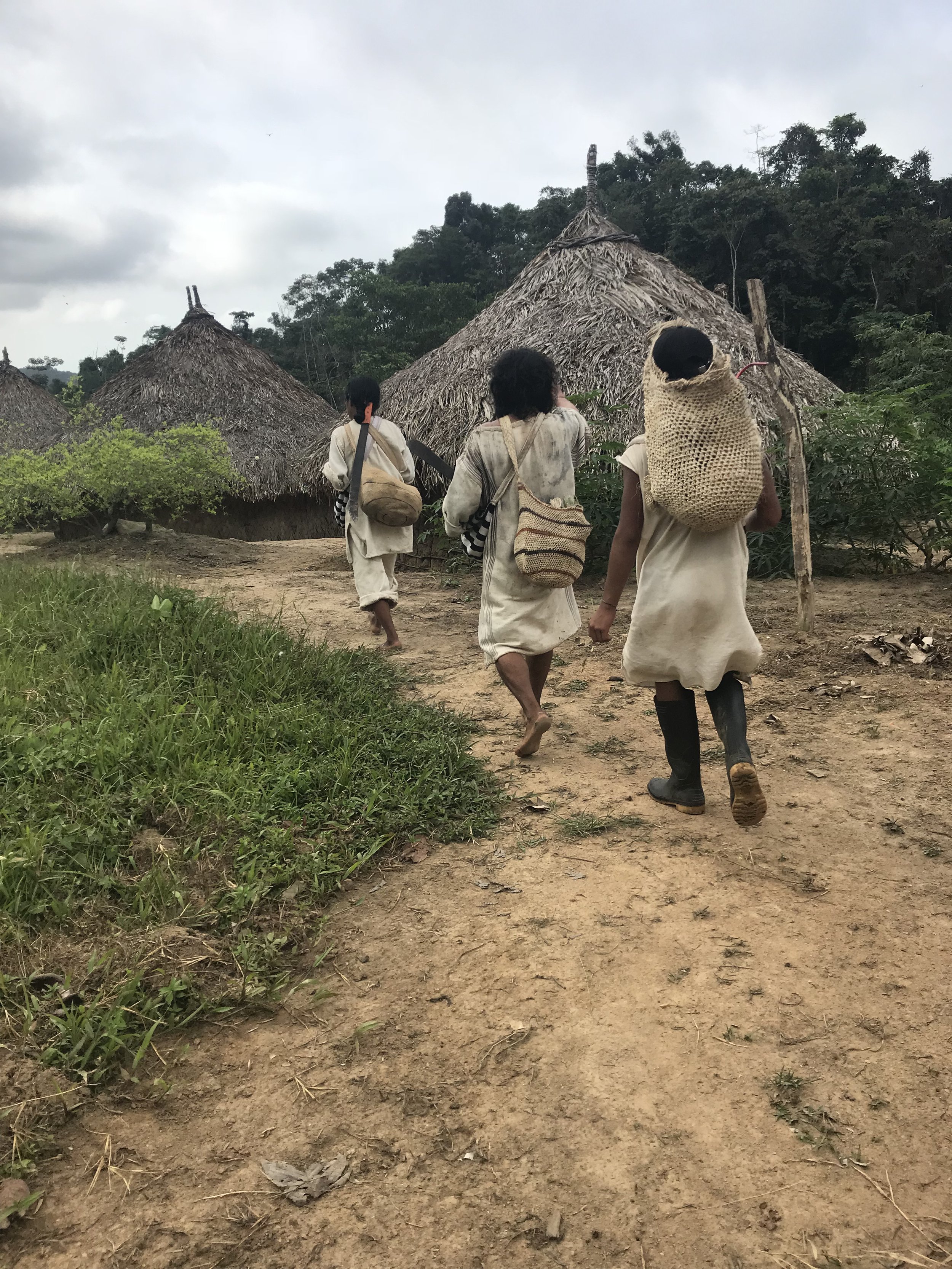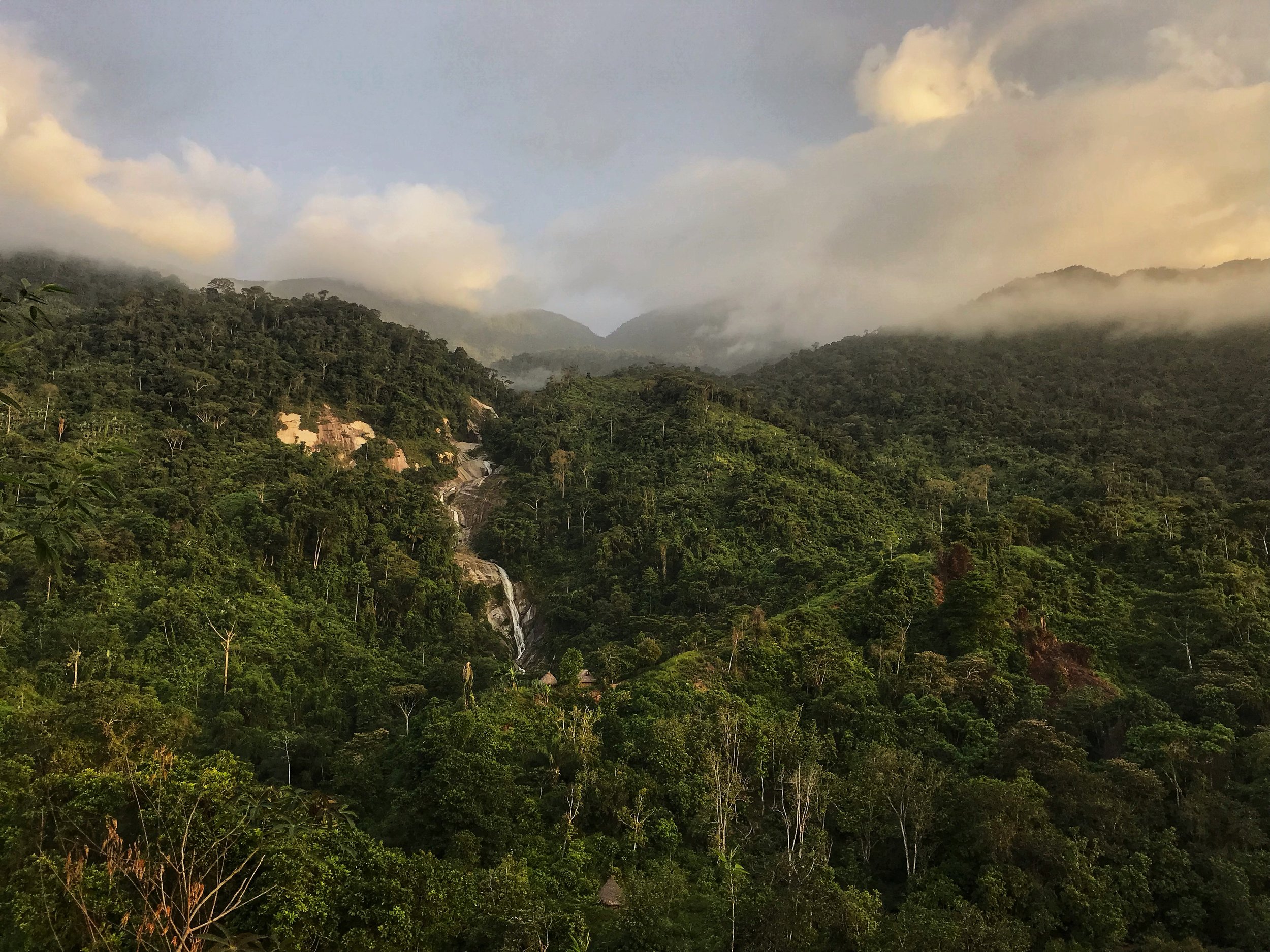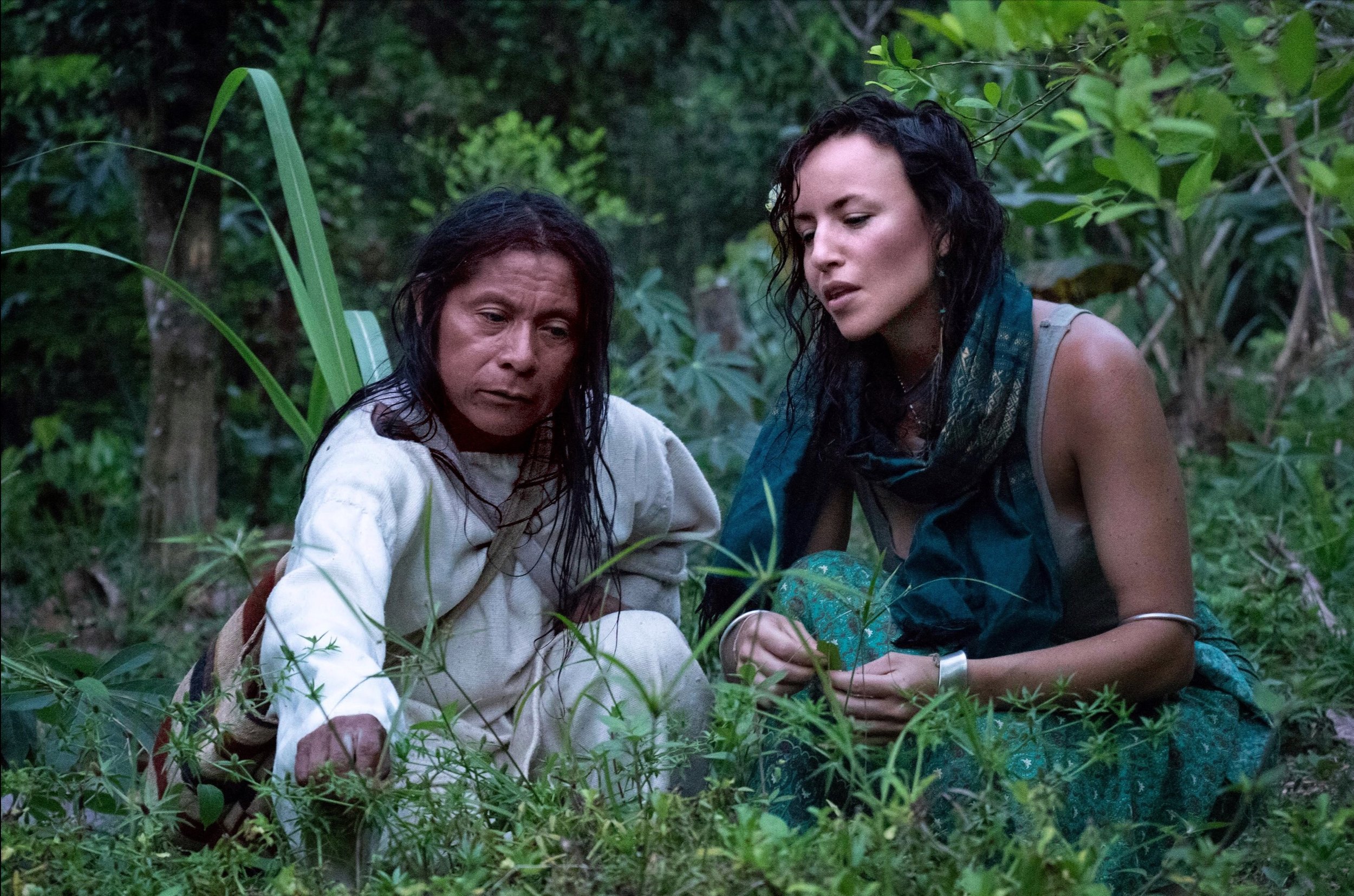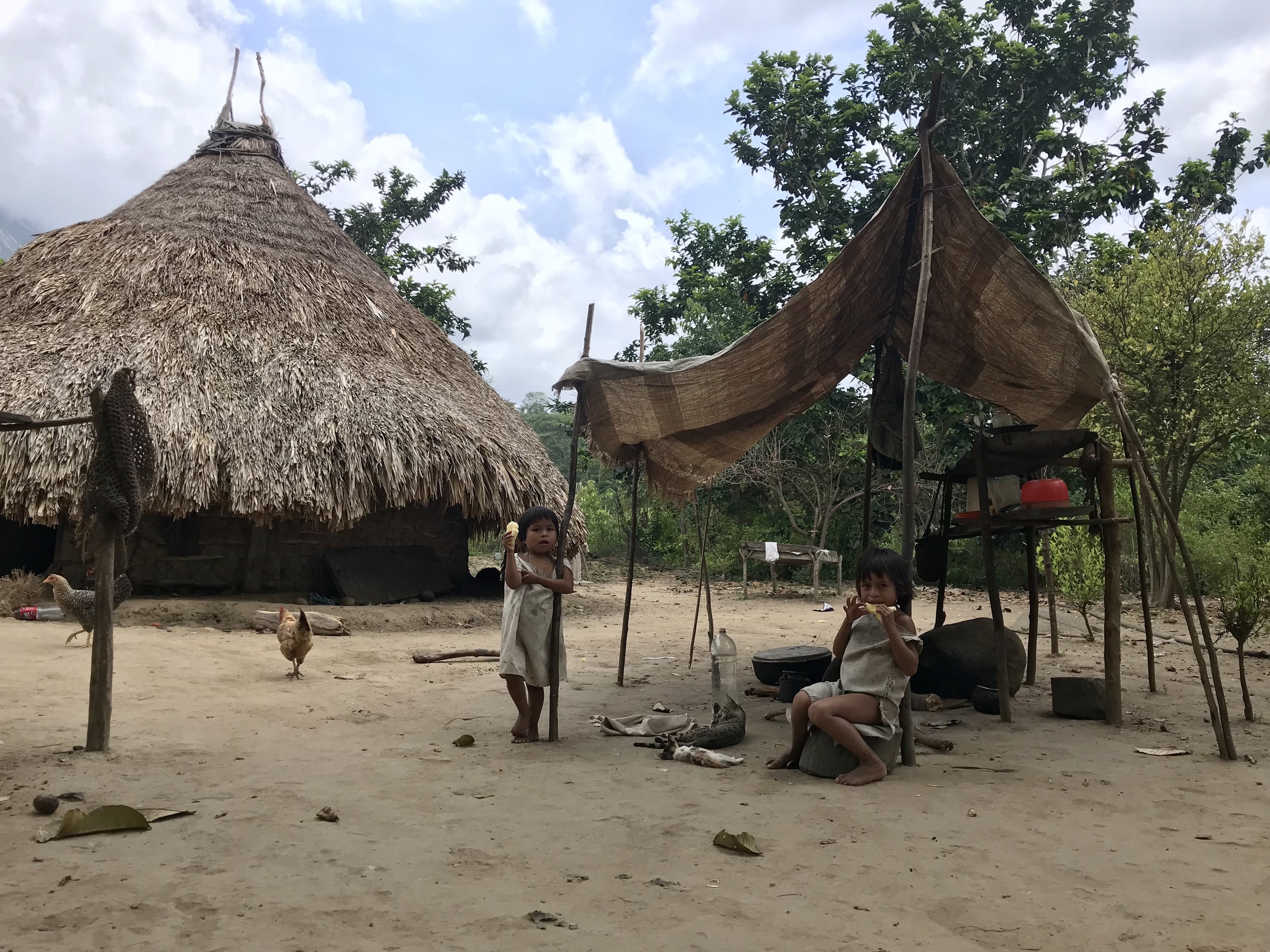Nativa
If you don’t like the climate or landscape while riding in Colombia, just keep riding. It is bound to change drastically, and very quickly.
As the nation with the most geographical diversity on the planet, Colombia has an astounding 314 types of ecosystems, including Amazon rainforests, dry forests, high alpine Andean ecosystems called el páramo, tropical coastlines, and arid deserts. In the north, you can stand with your feet in the Caribbean and gaze upon snow-capped mountains, the Sierra Nevadas del Santa Marta, within them the highest mountain closest to the sea in the world, a pyramid made of granite, containing all the ecosystems within itself.
Looking through the mango trees and palms of Palomino to see the snow-capped peaks of the Sierra Nevada del Santa Martas. Photo by Dirtbag Diaries story-teller, Isiah Branch-Boyle.
Of the nearly 10,000 km of roads I traveled in Colombia, those of the Sierra Nevadas del Santa Marta were the most gnarly. Depending on the season, it can be a full on mud slog. I highly recommend it.
These rugged mountains are home to four tribes, descendendants of the Tayrona, a people were never fully conquered by the Spanish. They believe they exist to protect the Earth, that our planet is a living being, and humanity its children. As caretakers, to keep the natural orders in balance, they make payments of cotton from the high mountains, imbued with their thoughts of gratitude for services rendered from the earth.
The Mamos are somewhat like shamans; they are “divinely chosen”, but raised separate from the others, in darkness. They live for years in dug-out huts or caves, only coming out at night. They develop an ability to listen to the Earth, to know deeply the celestial bodies, to read messages from observing the movement of water. They have felt the changes of the “Great Mother” and say that the destruction, exploitation, and extraction of resources will lead to our own demise.
The Kogi reject our “progress and modern comforts,” and are not welcoming to outsiders. I was therefore extremely fortunate to be allowed into their territory.
I went with the Nativa Foundation. Our objective was to set up camera traps to document the elusive tapir, an ancient mammal related to the rhinoceros and horse, and prime prey for the jaguar. We set up our camera near a small stream, where we found tracks of both animals. I removed my shoes and let the Kogi lead me through the mountains, bathing and drinking from their rivers, sleeping in their traditional huts. They have an easy strength about them, perhaps one that comes from living in such harmony with nature, traversing the steep mountain slopes of the Sierras, and tending the land in a way that it continues to provide for generations to come.
Like the Amazon, the Sierra Nevada de Santa Marta is a region celebrated for its biodiversity. It has been referred to as one of the world’s most irreplaceable nature reserves, with much of its wildlife found nowhere else on Earth. Recent discoveries, such as frogs that secrete antibiotics and a vaccine for yellow fever, are being documented as reason to extend the protective boundaries of the national parks and indigenous lands.
